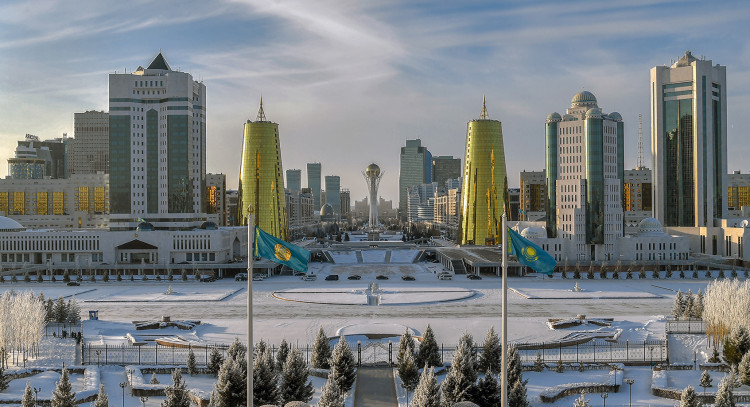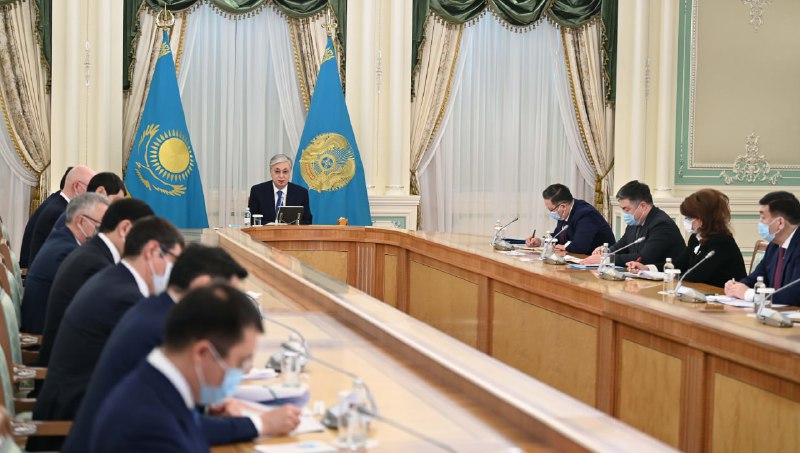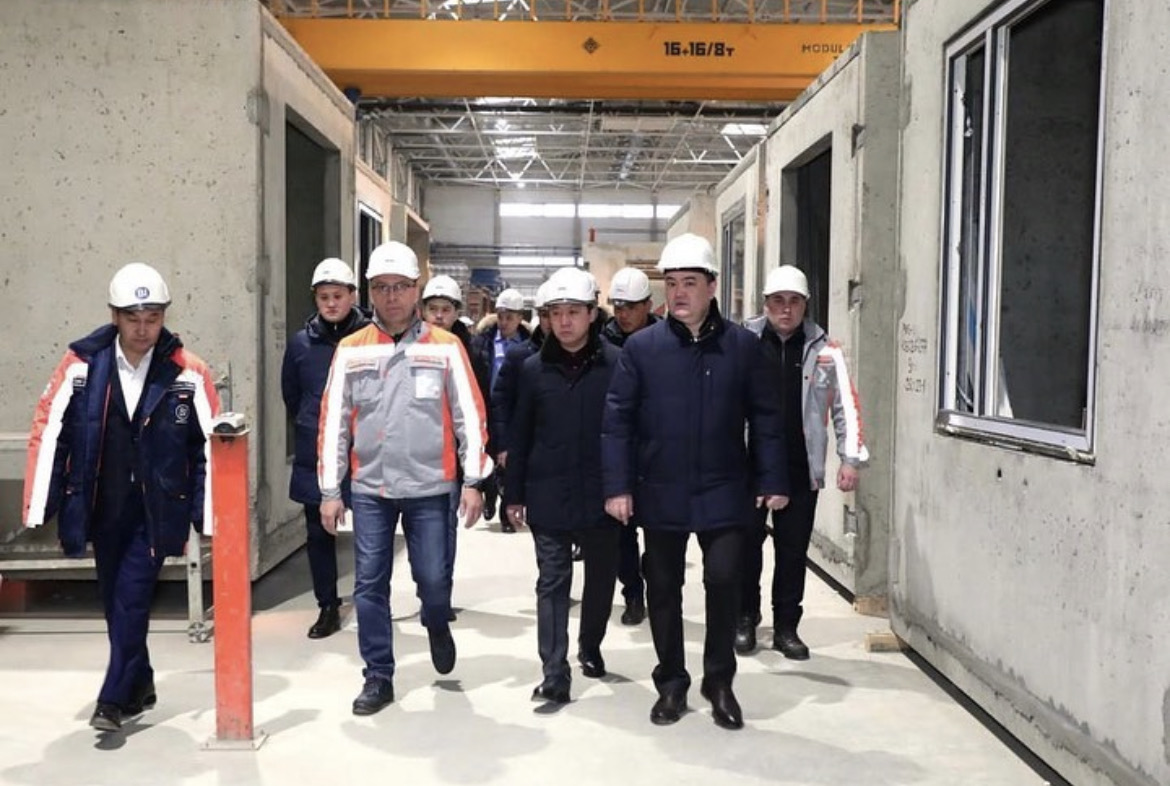ASTANA – Plans for the development of Kazakhstan’s capital city Astana were in the spotlight of a Jan. 30 meeting in Akorda with President Kassym-Jomart Tokayev, ministers, Astana akim (mayor) Zhenis Kassymbek and other senior officials in charge of the capital.

View on the city from Akorda presidential residence. Photo credit: Akorda.kz
Astana, the capital city that received back its better known name after a switch from Nur-Sultan last September, is home to nearly 1.4 million people, or 6 percent of the country’s 19 million population. The city’s economy accounts for 10.6 percent of the country’s GDP, and is dominated by trade, construction and industry.
Tokayev stressed the economic potential of Astana is much more than what the current indicators show and questioned the efficiency of the efforts to attract investments. He advised the officials to redirect the focus on the city’s two special economic zones on the processing industry, IT sector and new technologies.
“Today, potential investors have to beg [for support], then they give up, and they leave. As a result, Astana loses significant investments,” said Tokayev.

Tokayev addresses Astana mayor, senior officials in Akorda on Jan. 31. Photo credit: Akorda.kz
He also spoke about the need to stimulate close trade and economic, transport and logistics cooperation between the capital and the suburbs, including launching new production enterprises and infrastructure facilities in the villages near the capital.
“The Astana agglomeration should be as comfortable as possible for attracting investments, innovations and labour of qualified specialists. It is necessary to intensify work in this direction. It is a very urgent issue when fundamental changes in the world economy occur at this stage. We have to use this historic opportunity to make the metropolitan region an economic pillar of our country,” he said.
A day before the meeting, Astana mayor Zhenis Kassymbek, who reported on the Astana development to President Tokayev on Jan. 27, said nearly 30 projects worth 118 billion tenge (US$256.7 million) in industry, medicine, agriculture, education and logistics are planned to be launched in 2023 and create more than 2,000 jobs.

Astana mayor Zhenis Kassymbek tours industrial facilities in Astana on Jan. 30. Photo credit: Kassymbek’s Instagram page
“The capital should fulfil its potential as a center of investment attraction. More than 70 embassies and 16 international organizations are based here. This opens up great opportunities for attracting investment, which for some reason are not used,” said Tokayev.
Infrastructure development
Tokayev also cautioned officials about the rapidly rising urbanisation level in the city, remarking that the capital’s population may reach two million people by 2030.
He noted infrastructure development remains a priority, referring to a poorly developed engineering infrastructure and a growing shortage of heating energy. Some of the capital’s strategic projects, including gasification, have not been implemented.
“The first stage of the Saryarka gas pipeline [designed to provide gas to northern regions] was completed in 2019. The task for the akimat is to bring gas to residential areas where more than 300,000 people live. Only around 8,000 people have a gas supply today. Because of the slow pace of gasification, the ecology is deteriorating – on frosty days, the smoke of furnace heating forms a thick smog over the city,” said Tokayev.
Among other forgotten projects is the light rail train (LRT) system, an ambitious initiative meant to transform the city’s public transport system which has dragged on for at least ten years and gotten embroiled in multiple corruption cases.
A 22.6-kilometer light rail line was supposed to connect the airport and a new train station, with 19 trains passing through the city’s 18 main sites on the left bank of Astana, including Nazarbayev University and Abu Dhabi Plaza.
President Tokayev said though the concept behind the project is “mostly flawed,” it is too late to give up on it.
“Now we have no other choice. We have to implement this project. If we stop the construction of the LRT, the losses will be even greater. There is no other alternative,” he said, instructing the officials to speed up the project.
The Urbanist Approach to Astana Development
It is not the first time that President Tokayev has brought up the need to involve urban design professionals in the city’s further development. He emphasised that Astana needs more green areas, public spaces and pedestrian streets and brought the city of Kazan up as an example.
Some of the city’s initial flagship districts, such as the EXPO area, failed to become attractive, said the President, describing it as “visually beautiful, but lifeless.”
“Our goal is to make the capital comfortable for our citizens and foreign guests at any time of the year, to improve the image of Astana as much as possible. Pedestrian bridges should be built across the river,” he said.
Criticising the landscaping efforts in the city, Tokayev told officials Astana must become a garden city in five years with more perennial plants.
Shortage of Schools in Astana
While the capital’s growing population might be a positive factor overall, it puts pressure on social infrastructure, including schools. Despite efforts to build more schools, overloaded schools and those in deteriorating condition remain a problem that hamper the city’s ambitious plans to become the country’s educational and intellectual centre.
According to Tokayev, at least 45,000 children are waiting for their placement in preschool organisations.
“The construction of schools is a strategic task. Not only the state but also wealthy citizens should be actively involved in its implementation. I have already talked about this. But there is a lack of private initiative in this direction. Therefore, we should think about building schools at the expense of private capital,” he added.
According to the data from the Astana akimat (city administration), 36 educational institutions were built and commissioned from 2019 to 2021 and 44 schools for 120,000 places are expected to be built by 2025.


